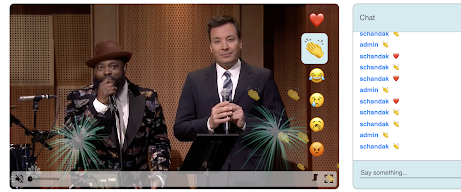Technology met the performing arts in the fall 2020 course “Video and Audio Technology for Live Theater in the Age of COVID,” as students worked on a research project to develop software geared toward live, virtual theater productions amid a global pandemic. The software will be used to host a production in late winter quarter titled “StageCast: Experiments in Performance and Technology,” which includes a set of independent 10-20 minute plays performed by five students chosen to participate in the production.
Theater is “an art form that’s been devoted to having people in the same room breathing the same air,” said StageCast artistic director and theater and performance studies professor Michael Rau, but the COVID-19 pandemic forced the theater community to adapt.
Zoom, although widely used as video-conferencing software, proved to be a poor platform for showcasing real-time theater productions. Theater performers struggled with issues including low video quality, high latency and delayed conversations.
“Bouncing energy off the audience is why I love performing, because it makes me feel validated, but also because I know that I’m doing something to make someone’s life better,” said StageCast assistant director Chloe Chow ’23 in regards to her own performing experiences. “If I can’t see the smile or the applause, or the laughter or the cry or scream, then I feel like I’m only doing half my duty as an artist and Zoom chat just doesn’t hit the same.”
The importance of performer-audience connections makes theater unique as an art form, Rau added.
“One of the things that distinguishes theater from radio or film is the fact that there’s a way for the audience to make their presence known,” Rau said. “The actors know that they’re there and the audience knows that the actors are there. There’s a relationship there.”
Zoom’s inadequacy inspired Rau, electrical engineering professor Tsachy Weissman and computer science professor Keith Winstein to create a course where students developed software to improve the quality of live but remote performances.
Throughout fall quarter, students from the electrical engineering and computer science departments worked to build a platform that could better support the needs of theater.
The 15-student class was split into four groups, with each group focusing on a different aspect of the performing arts. The groups worked on lowering the latency of audio and video; improving video design; developing software to make it easier for video, lights and sound operators to control their corresponding hardware; and collecting feedback from audience members through emojis, chat boxes and audio.
The technology created for StageCast is adapted from Puffer, a TV streaming platform developed by a group led by Francis Yan Ph.D. ’20, according to electrical engineering master’s student Qingxi Meng M.S. ’22. The StageCast crew, however, customized Puffer to fit the needs of live theatrical shows. They deleted and simplified parts of Puffer’s functions, such as an algorithm created for those in rural areas that adjusted video quality based on the user’s internet connection. At the same time, they implemented features such as emojis, animations and a chat box for increased audience involvement.
Meng said that the process has been challenging but ultimately rewarding.
“Maybe you’re spending one week trying to do some research and find out it doesn’t work,” he said. “You feel like this week is not very rewarding at all. It’s a little bit frustrating.”
Despite the hardships, Meng said that it was one of the “best experiences” he had at Stanford.
“Each week there’s something new happening,” he said.
He added that working with people with theater backgrounds was “very fun and rewarding” for him because he has spent most of his time at Stanford surrounded by other students with engineering and computer science backgrounds.
Unlike Ram’s Head Theatrical Society’s “Gaieties 2020: Unprecedented Times,” a pre-recorded show that was live streamed, the aim of StageCast is to give viewers a live, real-time virtual production that will allow audiences to provide feedback in real time.
Although in-person performances are the most ideal for theater, virtual productions like “StageCast” may play a role in the future of the performing arts, Rau said: Expanding certain productions to include digital versions could “build our audience and distribute aspects of the production that capture part of what makes it unique to a wide global audience.”
“It’s a medium that adjusts to the present circumstances,” he added. “I think what’s amazing about theatre is that it’s a reflection of a community.”
According to Chow, StageCast “was a great way to look at the intersectionality of the performing arts and engineering and see how we can bridge culture within Stanford itself.”
The StageCast performance is slated to premiere from Mar. 4 through Mar. 6. To view the group’s performance, a link will be posted on the TAPS website between the end of February and early March.
Contact Kaitlyn Huang at klhdance18 ‘at’ gmail.com.
